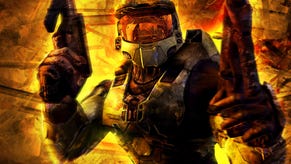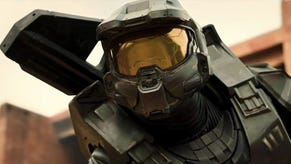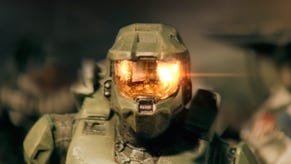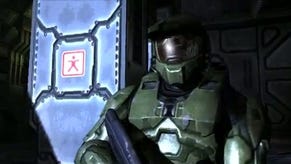Better Than Halo: The Making of Halo 2
As Microsoft prepares to switch off Xbox 1, Bungie reveals the painful birth of the game that defined Xbox Live.
"We try to start with multiplayer for everything," Butcher continues - an uncanny echo of the design philosophy espoused by Blizzard's design boss, Rob Pardo, in an interview with Eurogamer last year. "Even on Oni, although we didn't end up shipping with multiplayer, we did build a multiplayer mode and beat each other up in the office, which helped to tune the combat."
While plans were hatched for ground-breaking multiplayer, every other part of the company was creating equally ambitious plans. An epic narrative arc was emerging, with a huge set of missions and environments to support it. New gameplay features were being created, some in response to perceived weaknesses in Combat Evolved, others entirely new - and of course, this new engine, designed to push the Xbox to its limits, was being built from scratch in the background.
With the gaming world watching, it was time for Halo 2 to make its grand entrance. A cinematic trailer had given gamers a glimpse of the sequel in September 2002 - but it was at E3 2003 that we would get our first proper glimpse of what was next for the Master Chief.
There are a handful of E3 demos which live on in the memories of gamers and journalists - videos or demos so thrilling that they fuelled excitement for their games, and even for console platforms, for years afterwards. Metal Gear Solid 2, shown off at E3 ahead of the launch of the PS2, is a good example. Halo 2 at E3 2003 was of the same ilk.

A short demo, played on stage, showed the Master Chief back on Earth, flying into the Covenant-occupied, futuristic city of New Mombasa. Amidst the skyscraper peaks of the city, warfare on a scale only dreamt of in the original Halo raged across the streets. The Chief had learned new tricks - he could dual-wield weapons, and board enemy vehicles by kicking their drivers out of their seats. The action was fast, cinematic and exciting. Everyone who saw the trailer walked out with their blood pounding faster, and with Halo 2's release date seeming an impossibly long way away.
Everyone, perhaps, except the Bungie team themselves - who probably walked out of the demo theatre with more mixed feelings.
The public loved the new ideas like dual-wielding and vehicle hijacking, both of which had been key objectives in the new design. The demo itself looked polished and accomplished - more like a game in the final stages of development than one 18 months from launch. However, the demo, unfortunately, was smoke and mirrors. Behind the scenes, Halo 2's development process was rapidly becoming a waking nightmare.
"The graphics engine that we showed at E3 2003, driving around the Earth city... That entire graphics engine had to be thrown away, because you could never ship a game on the Xbox with it," Butcher sighs. "Through putting ourselves through hell, we were able to do a five-minute demo of it, but after we came back from E3 we had to admit that this graphics engine was never going to work - it was never going to support the kind of environments that are really important for a Halo game. So we literally scrapped the entire graphics engine and started from scratch."
"Even that whole environment, the Earth city, was way too big for the engine at the time," adds Carney. "We ended up cutting out huge parts of geometry from that level, so you never actually saw that."
This was just the most prominent symptom of a wider problem. Bungie's ambition was catching up with it. New Mombasa wasn't the only level that had to be unceremoniously trimmed in this way. The decision to entirely rewrite the tech behind the game had meant that for over a year, there was no working version of Halo - leaving the design and art teams working on assets without being able to test them.








